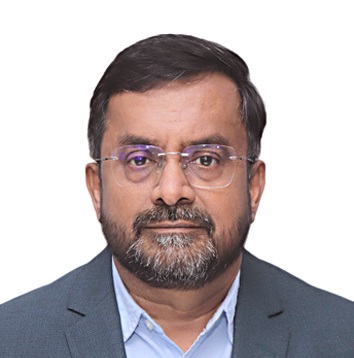.png)

Krishnadevan is Consulting Editor at BasisPoint Insight. He has worked in the equity markets, and been a journalist at ET, AFX News, Reuters TV and Cogencis.
October 3, 2025 at 1:10 PM IST
A new SEBI investor survey throws light on a paradox that should make both policymakers and markets sit up. Only 9.5% of Indian households surveyed participate in the securities market. The rest, despite being aware of securities products, choose to stay away. That gap isn’t just a statistical quirk. It is the country’s biggest untapped capital-market opportunity.
The first barrier is psychological. 79.7% of Indians prioritise capital preservation over returns, while 34% of non-investors cite fear of losses as their main deterrent. This is a deeply ingrained cultural instinct, not just a lack of information.
The second barrier is demographic. Urban participation is 15% while rural areas barely touch six. Top metros reach 23%, smaller towns limp below 10%. Educational qualification widens the gap, with graduates show 19% participation versus postgraduates’ 27%.
The third barrier is institutional. SEBI’s investor awareness programmes reach less than 1% of their target audience. The vacuum has been filled not by brokers or banks but by finfluencers. 56% of investors rely on them, and 62% make investment decisions based on their recommendations. An astonishing 93% find them credible.
This is where the paradox sharpens. Millions of Indians are knowledgeable enough to understand complex products such as REITs, InvITs and AIFs. Yet many rely on YouTubers with ring lights rather than registered advisors. Regulation of unregistered influencers is still reactive. Meanwhile, trust in formal institutions remains low and processes remain complicated.
Language adds another layer. Of those surveyed, 47% of investors prefer Hindi and another 47% prefer regional languages. Only 5% prefer English. Yet most investor education remains metropolitan and English-centric. Rural India lags at 56% awareness versus 74% in urban areas.
Mind The Gap
This gap isn’t just an educational problem. It is a structural investment story hiding in plain sight. Converting, say, even 20% of the 213 million aware households into active investors would double current market penetration. That would mean deeper domestic capital pools, less reliance on foreign flows, and more stable market participation cycles.
For asset managers, brokerages and fintech platforms, this is the growth frontier. For policymakers, it is the missing plank in India’s capital-market deepening agenda.
Closing this gap requires more than well-meaning campaigns. It requires three structural shifts. First, language localisation must move beyond tokenism. Investor outreach in 14 regional languages, not English-heavy slogans, is what real inclusivity looks like.
Second, digital platforms need to build bridges, not create a quagmire. Household investment data can be harnessed to design micro-investing tools that ease savers into markets gradually. Addressing loss aversion through small, structured exposures works better than dropping first-timers into the deep end.
Third, grievance redressal mechanisms need visibility. Only 6% know SEBI’s redressal system exists, even though 88% of those who used it were satisfied. Trust doesn’t grow in silence.
India’s biggest investor base isn’t waiting to be discovered. It’s waiting to be converted. The potential is immense, but potential has never moved markets on its own. Unless India turns knowledge into participation, those 213 million will keep watching from the stands.




